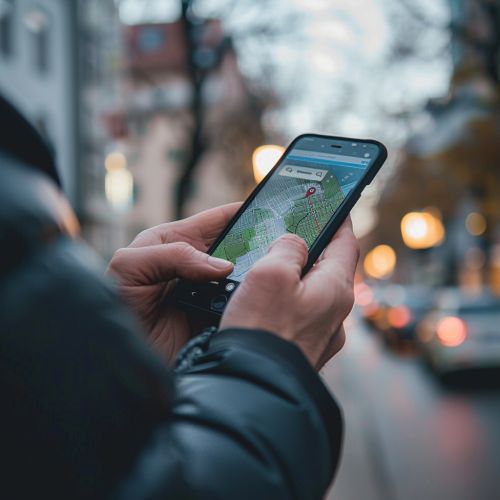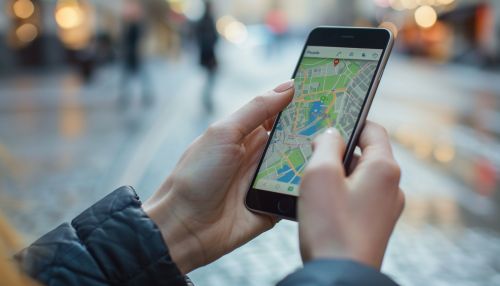Location-based Services
Introduction
Location-based services (LBS) are a class of services that utilize the geographical location of a device to provide information, entertainment, or security. These services leverage technologies such as GPS, cellular network triangulation, Wi-Fi positioning, and other location-determining methods to deliver context-aware applications. LBS have become integral to various sectors, including transportation, retail, healthcare, and emergency services, offering significant benefits and transforming how businesses and individuals interact with their environments.
Technologies Behind Location-Based Services
Global Positioning System (GPS)
GPS is a satellite-based navigation system that provides location and time information in all weather conditions, anywhere on or near the Earth. It consists of a constellation of at least 24 satellites that transmit precise microwave signals, allowing GPS receivers to determine their location, speed, and direction. The accuracy of GPS can be enhanced with techniques such as DGPS and RTK positioning.
Cellular Network Triangulation
Cellular network triangulation determines a device's location by measuring the time it takes for a signal to travel between the device and multiple cell towers. This method is particularly useful in urban areas where GPS signals may be obstructed by buildings. The accuracy of cellular triangulation depends on the density of cell towers and the quality of the signal.
Wi-Fi Positioning System (WPS)
WPS uses the known locations of Wi-Fi access points to determine the position of a device. By measuring the signal strength from multiple access points, the device can triangulate its location. This method is highly effective indoors where GPS signals are weak or unavailable. Companies like Skyhook have developed extensive databases of Wi-Fi access points to enhance the accuracy of WPS.
Bluetooth Low Energy (BLE)
BLE is a wireless personal area network technology designed for short-range communication. It is commonly used in beacon technology, where small BLE devices, known as beacons, transmit signals that can be detected by nearby devices. Beacons are used in various applications, including indoor navigation, proximity marketing, and asset tracking.
Geofencing
Geofencing involves creating a virtual boundary around a geographical area. When a device enters or exits this boundary, an alert or action is triggered. Geofencing is used in applications such as location-based marketing, fleet management, and security systems. It relies on GPS, cellular, or Wi-Fi data to determine the device's location relative to the predefined boundary.
Applications of Location-Based Services
One of the most common applications of LBS is in navigation and mapping services. Applications like Google Maps and Waze provide real-time directions, traffic updates, and points of interest based on the user's current location. These services have revolutionized how people travel, offering convenience and efficiency.
Location-Based Marketing
Location-based marketing uses LBS to deliver targeted advertisements and promotions to consumers based on their geographical location. Retailers can send personalized offers to customers when they are near a store, enhancing the shopping experience and driving sales. This approach leverages geofencing and beacon technology to reach potential customers at the right place and time.
Emergency Services
LBS play a crucial role in emergency services by enabling rapid response to incidents. Emergency responders can locate individuals in distress, track the movement of emergency vehicles, and coordinate rescue operations more effectively. Enhanced 911 (E911) systems use LBS to provide precise location information to emergency call centers, improving response times and outcomes.
Healthcare
In healthcare, LBS are used for patient monitoring, asset tracking, and location-based reminders. Wearable devices equipped with GPS can track the movements of patients with conditions such as Alzheimer's disease, ensuring their safety. Hospitals use LBS to locate medical equipment and optimize resource allocation, improving operational efficiency.
Social Networking
Social networking platforms like Facebook and Instagram integrate LBS to enable location sharing and geotagging. Users can share their current location, check-in at places, and discover nearby events and friends. This feature enhances social interactions and provides context to shared content.
Transportation and Logistics
LBS are essential in transportation and logistics for tracking vehicles, optimizing routes, and managing fleets. Companies use LBS to monitor the real-time location of shipments, ensuring timely deliveries and reducing operational costs. Ride-hailing services like Uber and Lyft rely on LBS to connect drivers with passengers and provide accurate arrival times.
Privacy and Security Concerns
The widespread use of LBS raises significant privacy and security concerns. The collection and use of location data can lead to unauthorized tracking, profiling, and data breaches. It is essential to implement robust security measures and adhere to privacy regulations to protect users' location information.
Data Encryption
Encrypting location data during transmission and storage is crucial to prevent unauthorized access. Encryption ensures that even if data is intercepted, it cannot be read without the appropriate decryption key. Implementing end-to-end encryption can enhance the security of LBS.
User Consent
Obtaining explicit user consent before collecting and using location data is a fundamental privacy principle. Users should be informed about how their data will be used and have the option to opt-out. Transparent privacy policies and user-friendly consent mechanisms are essential to build trust and comply with regulations like the GDPR.
Anonymization
Anonymizing location data can mitigate privacy risks by removing personally identifiable information. Techniques such as data aggregation and obfuscation can be used to anonymize data while retaining its utility for analysis and service delivery. However, it is important to ensure that anonymized data cannot be re-identified.
Future Trends in Location-Based Services
5G Technology
The advent of 5G technology promises to enhance the capabilities of LBS by providing faster data speeds, lower latency, and improved connectivity. 5G will enable more precise and reliable location tracking, supporting advanced applications such as autonomous vehicles and smart cities.
Augmented Reality (AR)
AR integrates digital information with the physical world, enhancing the user's perception of their environment. LBS combined with AR can provide immersive experiences, such as interactive navigation, location-based games, and contextual information overlays. Applications like Pokémon GO have demonstrated the potential of AR in LBS.
Internet of Things (IoT)
The proliferation of IoT devices will expand the scope of LBS by connecting a wide range of sensors and actuators. IoT-enabled LBS can provide real-time monitoring and control of various systems, such as smart homes, industrial automation, and environmental monitoring. The integration of LBS with IoT will drive innovation and efficiency across multiple domains.
Artificial Intelligence (AI)
AI can enhance LBS by enabling predictive analytics, personalized recommendations, and intelligent decision-making. Machine learning algorithms can analyze location data to identify patterns, optimize routes, and predict user behavior. AI-powered LBS will offer more accurate and context-aware services, improving user experiences.
Challenges and Limitations
Despite the advancements and potential of LBS, several challenges and limitations need to be addressed.
Accuracy and Reliability
The accuracy and reliability of LBS can be affected by various factors, such as signal obstructions, environmental conditions, and device limitations. Ensuring consistent and precise location data is critical for the effectiveness of LBS applications.
Battery Consumption
Continuous use of location services can drain the battery of mobile devices. Optimizing power consumption while maintaining accurate location tracking is a significant challenge. Techniques such as adaptive sampling and energy-efficient algorithms can help mitigate this issue.
Interoperability
Interoperability between different LBS platforms and technologies is essential for seamless integration and user experiences. Standardization efforts and open protocols can facilitate interoperability and enable the development of cross-platform applications.
Legal and Regulatory Compliance
Compliance with legal and regulatory requirements is crucial for the deployment of LBS. Regulations such as GDPR and the CCPA impose strict guidelines on the collection, use, and sharing of location data. Ensuring compliance with these regulations is essential to avoid legal repercussions and protect user privacy.
Conclusion
Location-based services have transformed various aspects of modern life, offering convenience, efficiency, and enhanced experiences. The integration of advanced technologies such as GPS, cellular triangulation, Wi-Fi positioning, and BLE has enabled the development of diverse LBS applications across multiple sectors. However, the widespread use of LBS also raises significant privacy and security concerns that must be addressed through robust measures and regulatory compliance. As technology continues to evolve, the future of LBS holds immense potential, driven by advancements in 5G, AR, IoT, and AI. Addressing the challenges and limitations will be crucial to unlocking the full potential of location-based services and ensuring their sustainable and ethical use.


